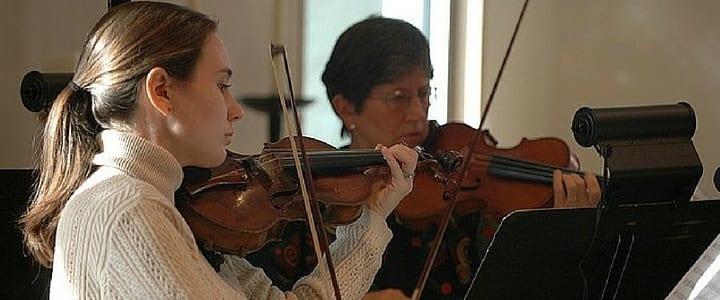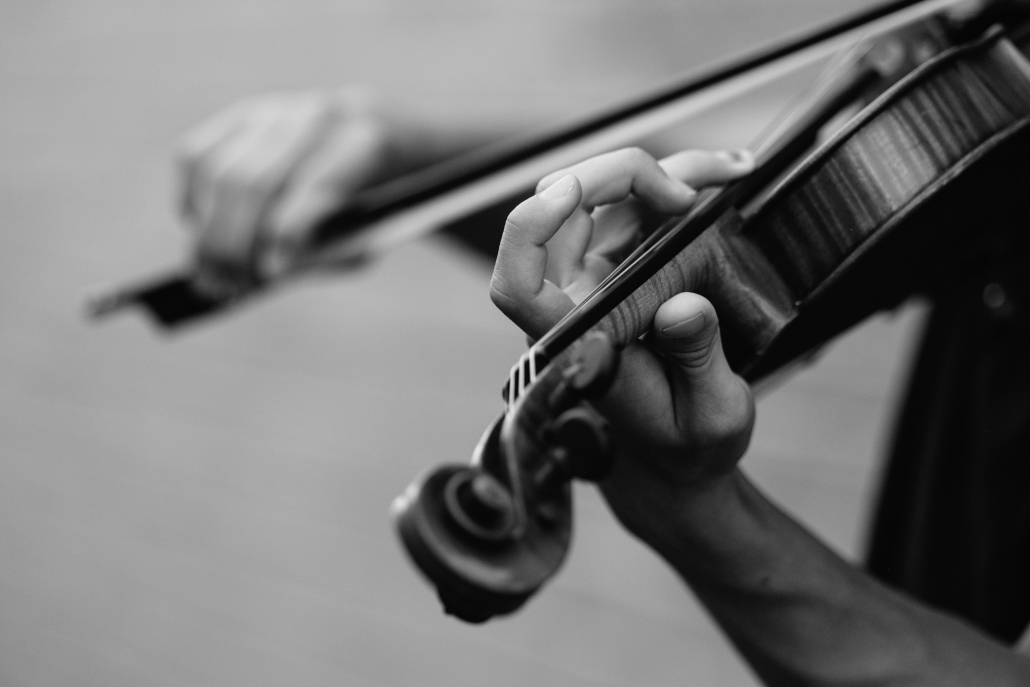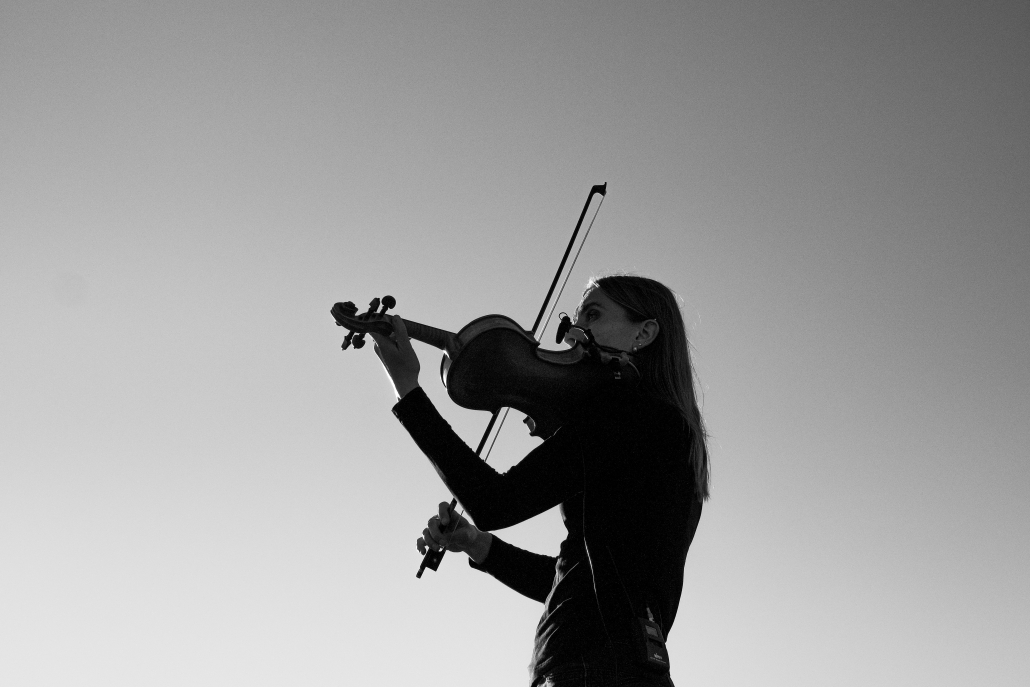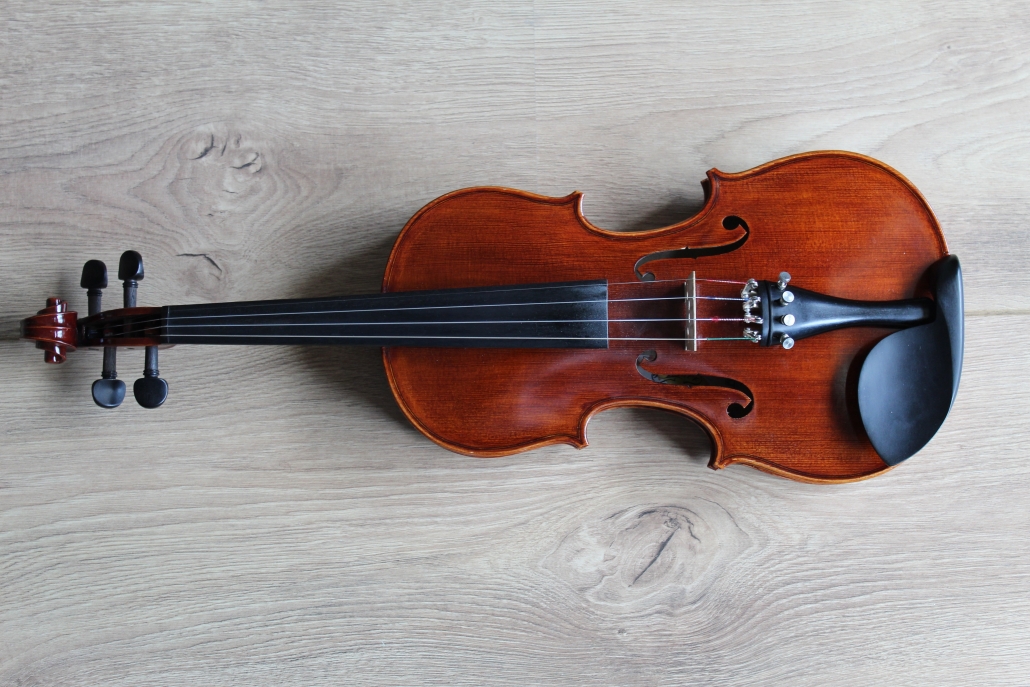Reducing tension while playing the violin is extremely important. After all, relaxing your muscles is one of the keys to producing a smooth sound. Below, violin teacher Carol Beth L. shares five exercises for helping reduce tension while playing the violin.
Are you having a difficult time perfecting your violin playing? Very often, violin students have trouble producing a good sound when they aren’t properly relaxed.
High-level players learn, among other things, to eliminate tension in the areas required to produce a beautiful sound, such as their bow-arm and bow-hand.
Some, however, may still put themselves at risk for stress-related injuries if they aren’t careful. For violin students, staying relaxed will help them play more beautifully and for a longer period of time.
Is Violin Hard to Learn?
Violin isn’t hard to learn, but mastering the proper posture and technique can be a bit difficult. To learn the violin quickly and to reduce any tension you might experience, you should:
- Warm up both your fingers and wrists
- Practice violin tabs
- Do a shake-out
- Perfect your posture
- Try the “Baroque bow hold”
Of course, one of the best things you can do as you are learning to play the violin is to work with a qualified instructor. The right violin teacher will help teach you the proper posture and exercises to reduce tension and stay healthy.
Watching a video of someone playing the violin can also help you perfect your posture and give you an idea of what your pose and positioning should look like.
For example, in this video, you’ll learn how to hold a violin to stay comfortable and make beautiful music at the same time:
Why Does Holding a Violin Hurt?
When you are learning how to play the violin, you might find yourself caught off guard when you suffer from neck, shoulder, back, or arm pain.
Playing the violin shouldn’t be an exercise in pain tolerance. In fact, if you find yourself suffering from any pain, there’s a good chance that your playing is going to suffer, too.
So what’s causing it?
Pain when playing the violin (or even holding it) is usually caused by tension. When you tense your muscles in an effort to hold your instrument, it causes strain. As a beginner, you might find that it simply takes time to build the muscle strength you need for playing the violin.
Your tension levels will likely go away as you gain more experience, but it’s important that you also rely on your chin and shoulder rests so you can support the violin without making your head and neck do all the work. Remember correct posture and breathing, too, as these can both help reduce tension.
How Do You Hold a Violin Without Tension?
There’s lots of advice you’ll get about how to learn to play the violin, but the most important thing we can tell you is this – playing the violin shouldn’t be painful.
Below are a few exercises you can do if you feel yourself becoming tense while playing the violin:
1. Shake Your Muscles Out
If you’re feeling tense, put down your violin and shake away the tension. While this exercise seems pretty simple, it gives your muscles a fresh and relaxed start.
Oftentimes, you don’t even realize that you’re tensing up while playing the violin. Making a conscious effort to stop and shake out your muscles will often do the trick.
However, if you’re still feeling strained, try massaging muscles that don’t want to relax.
2. Take It Slowly
It’s easy to give into the temptation to rush. Rushing, however, adds unnecessary stress and takes away precious time needed for the fingers, hand, and arm to understand and respond to messages from the brain.
It’s usually only when you are fairly confident that you should speed up. Don’t take this to the extreme either, though. Some types of perfectionists advance more slowly because they don’t realize how much they can do.
3. Position Yourself Correctly
When a student holds the violin or the bow incorrectly or they have incorrect posture, muscles tend to tighten. Sometimes, this occurs without the student even realizing it.
If you’re having trouble positioning correctly, stop playing the violin and start over, making sure that your bow-arm is in the right position and your standing tall. Standing while practicing rather than sitting can also encourage correct posture.
4. Let Gravity Do Its Job
Some beginner violin players will push the bow down on the strings to make a sound. However, it’s more useful to guide the bow onto the strings, allowing gravity to actually do the work.
If that’s difficult to imagine, try thinking about air-bowing in a “u” shape–almost as if the bow is on a swing moving down onto the imaginary string and then back up again.
In doing this exercise, you’re letting yourself follow the arc naturally dictated by the pull of gravity combined with the forward and backward motion of the swing. Once you can do this with your bow in the air, put your violin back up and let the bow catch the string as it moves.
5. Try the “Baroque” Bow Hold
During the baroque era, the bow looked a lot more like a bow with which you might shoot an arrow. It was difficult to hold it close to the frog, so people held it a quarter to a third of the way up. Of course, modern bows are no longer shaped this way, but we can still learn from the basic idea.
First, find the balance point of your bow–that is, the point at which you can hold the bow by the stick with just a finger and thumb and allow the bow to hang horizontally. Visually, it will look like an imbalanced set of scales; both sides will weigh the same, but the side with the frog is heavier and therefore shorter.
Now hold the bow as closely as possible to your regular bowhold and try playing the violin. Chances are it will feel unnaturally light. Once you have played a little bit and moved back to the frog, you may notice that your sound is more open. If you do, it’s probably because your bowhold has become lighter and more relaxed.
6. Make Sure You Have the Right Equipment
A common error that beginning violinists make when playing the violin is failing to get an instrument that is the proper size. Violins are naturally small instruments, but if you don’t have the right make and model for your body type, you’re going to find yourself feeling kind of stiff.
Ask the shop where you buy your violin to measure your arm length. That way, you can see what size you need for playing the violin comfortably.
While holding your violin in the playing position, straighten your left arm. The tops of your fingertips should be near the top of the violin scroll. If your arm is past the top, the violin is too small and you’re going to find that playing the violin is incredibly painful.
You might also consider buying a shoulder rest. This violin-width pad will help you get used to the feeling of the violin on your shoulder, without it digging in.
Is the Violin Hard to Play?
Is playing the violin hard? It can be, but when you are learning how to play the violin, you shouldn’t suffer – and your discomfort shouldn’t be so severe that it forces you to stop playing the violin, either.
Holding and playing your violin should never cause you any pain, but if you’re experiencing pain either during or after playing, you may want to reevaluate your posture. Holding your violin too tightly or tensely can cause neck, shoulder, back, and arm pain.
Not only that, but the quality of your playing will suffer, too, as the physical strain imposed by this kind of tension makes you sound deflated, reduces your mobility, and affects your dexterity. So don’t think you can just muscle through the pain for the sake of good music – you need to be comfortable in order to sound good.
While you might have some discomfort as you’re getting used to holding your bow and violin, it should never be full-blown pain, and it should definitely go away with time.
If you’re currently taking violin lessons, try out these exercises and see if they help your playing. Some of these exercises I have done on my own for many years; others, I observed through teachers in recent years and then tried out myself.
All of them, however, can help violin students to improve their playing and, very often, can either directly or indirectly help to reduce tension.
Photo by Scott Schram
 Post Author: Carol Beth L.
Post Author: Carol Beth L.Carol Beth L. teaches viola and violin in San Francisco, CA. She currently plays viola in the San Francisco Civic Orchestra and has been teaching students since 2012. Learn more about Carol Beth here!
Suzy S.





